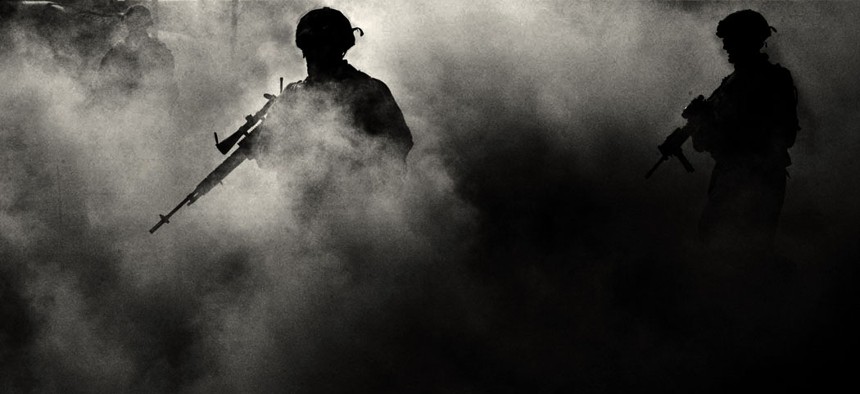Officials: The time is now for battlefield 3D printing
Leaders are optimistic about the capabilities 3D printing can afford, saying it should be leveraged today.
Military officials see a lot of potential for on-demand 3D printing – or as it’s also known, additive manufacturing – on the battlefield. And while there’s still a lot to be hashed out, commanders and decision-makers want to get it into the hands of troops sooner rather than later.
“We can use AM now in the short term,” said Scot Seitz of the Army Logistics Innovation Agency, referring to operational opportunities. Specifically, he thinks this technology could be utilized in swarming concepts. “I don’t need any metals production capability…I can produce using plastics and I can impact the operational maneuver space by swarming technologies…so that’s a simple example for near-term operational impact,” he said at an event on Feb 29 hosted by Deloitte.
“We don’t need to wait, in my opinion, to do 3D printing,” Marine Lt. Col. Howard Marotto said. “We want to get the machines out in the hands of the operator right now. Because the thing about ISIS and China and Russia and Iran and you name the country out there, they aren’t waiting. This technology isn’t that expensive on the low end. Anyone can afford it…Maybe [adversaries] make a decoy, maybe they make a bomb, maybe they make an IED – our Marines can do that too.”
Marotto noted that additive manufacturing is at the core of the Pentagon’s Third Offset Strategy. The problem for the Defense Department now and looking ahead, he said, is how to operate in an anti-access/area denial environment. The Third Offset Strategy aims to keep the U.S. military on top of near-peer competitors by leveraging technological advancements and utilizing concepts such as man-machine teaming.
“I will tell you, frankly…AM is the foundation for the Third Offset,” Marotto said. “Levering the technology as agnostic as it is…is really the key if you’re going to operate as a Marine Corps in a distributed ops environment. Everything from being able to print your own parts in stream…to printing your own UAVs for ISR, for weaponization, on site, custom made, with sensors to do that exact mission that you need at that exact moment.”
This concept could offer unprecedented tactical advantages for deployed soldiers. In fact, Army researchers are currently working on 3D printing small unmanned aircraft in the field for ISR.
Panelists at the event also discussed what the future of 3D printing might look like for decision-makers in the field down the road. “So 20 years from now, I really see AM as empowering innovation of the individual on the battlefield, and at home, and also operationalizing logistics – not just supply chain but end items,” Morotto said. “Maybe it’s one-time use, maybe it doesn’t have to be analyzed ad nauseum by engineers, maybe it’s something I don’t care [about protecting] because I shoot it out there [in a] chemical environment, and I don’t want it back. That’s where we want to use additive manufacturing and 3D printing.”
Other military officials also have talked recently about 3D printing’s potential. “On our event horizon, the 2030 year time frame is we’re looking at 3D printing where the engineering analysis is done for a problem – the part is printed down range and I don’t have to have spares. That’s where we want to go,” Rex Curry, chief of the Logistics Chief Information Office Support Division in the Air Force, said at a January mobile summit hosted by AFCEA.
Officials also note that adversaries also could take advantage of 3D printing’s inexpensiveness, printing what could be used as improvised explosive devices either in the air – by way of small drones – or on the ground. 3D printing enables one to mask the true nature of an object, especially one a small scale.





